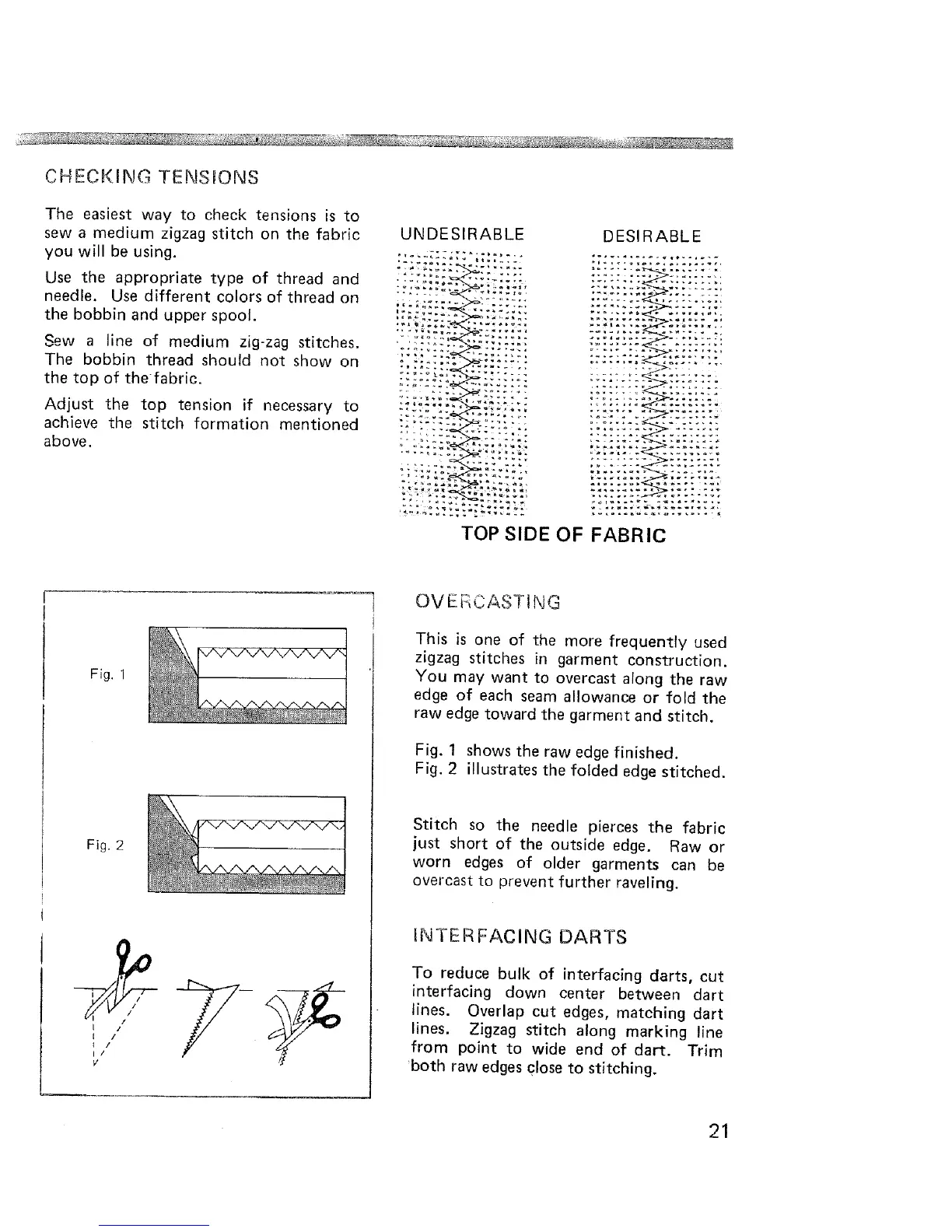CHECKING TENSIONS
The easiest way to check tensions is to
sew a medium zigzag stitch on the fabric UNDESIRABLE DESIRABLE
you will be using. •.... ::::;::';_::,.-;_ ;i::::::;:;,':t:;::;..
...."..... " ..... i i: !iii
Use the appropriate type of thread and ........ "" ....
needle. Use different colors of thread on "'_::;:"":'°.........." "'"'"'" "'°i ..............
the bobbin and upper spool. ........ " ...........
Sew a line of medium zig-zag stitches. "':-'_'_:' ":'::::-': ....................
The bobbin thread should not show on 1,:;::::o .-':::::,:
the top of the fabric. °.... ' .... ""::":;"
Adjust the top tension if necessary to ._'_",:':;_., ._. ....
achieve the stitch formation mentioned ii;:;:': ": ":"::::
above. _: ....... "..... ,_;
TOP SIDE OF FABRIC
Fig. 1
Fig. 2
/
I /
t /
I I
OVERCASTING
This is one of the more frequently used
zigzag stitches in garment construction.
You may want to overcast along the raw
edge of each seam allowance or fold the
raw edge toward the garment and stitch.
Fig. 1 shows the raw edge finished.
Fig. 2 illustrates the folded edge stitched.
Stitch so the needle pierces the fabric
just short of the outside edge. Raw or
worn edges of older garments can be
overcast to prevent further raveling.
INTERFACING DARTS
To reduce bulk of interfacing darts, cut
interfacing down center between dart
lines. Overlap cut edges, matching dart
lines. Zigzag stitch along marking line
from point to wide end of dart. Trim
'both raw edges close to stitching.
21

